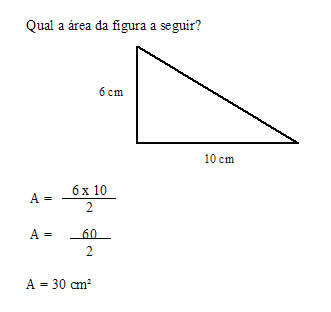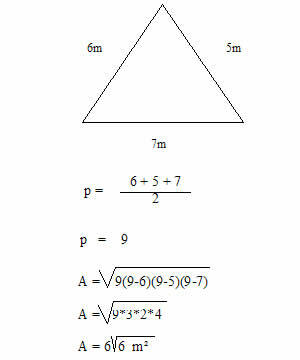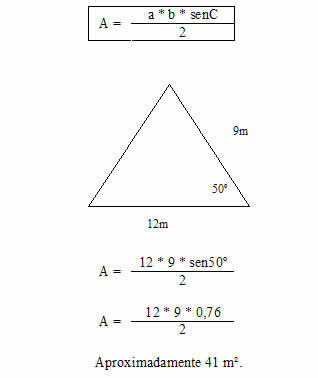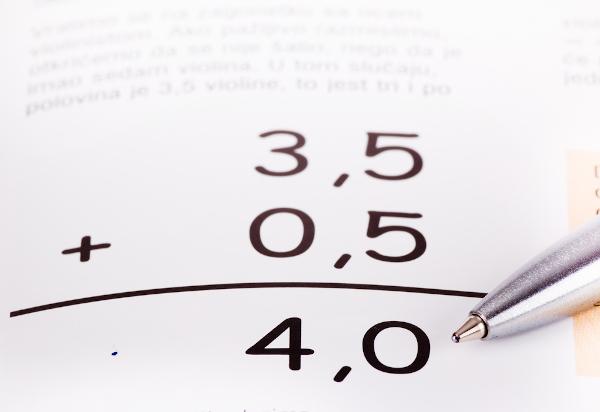The area of a triangular region is given by the following formula:

h = height measurement
b = base measure
We can write: the area of a triangular region is given by half the product of the base measure and the corresponding height measure.
Example 1 
We cannot always use the formula mentioned above, as in some situations the base or height is not given, so we have to resort to Heron's Formula.
Given a triangle of sides a, b and c we have:
Where p is the semiperimeter value.
Example 2 
There is another way to calculate the area of a triangle, when we know the measurements of two of its sides and the measurement of the angle formed by them, the area of the region will be calculated as follows:
Example 3
Do not stop now... There's more after the advertising ;)
by Mark Noah
Graduated in Mathematics
Brazil School Team
Spatial Geometry - Math - Brazil School
Would you like to reference this text in a school or academic work? Look:
SILVA, Marcos Noé Pedro da. "Area of a Triangular Region";
Brazil School. Available in: https://brasilescola.uol.com.br/matematica/area-do-triangulo.htm. Accessed on June 28, 2021.


